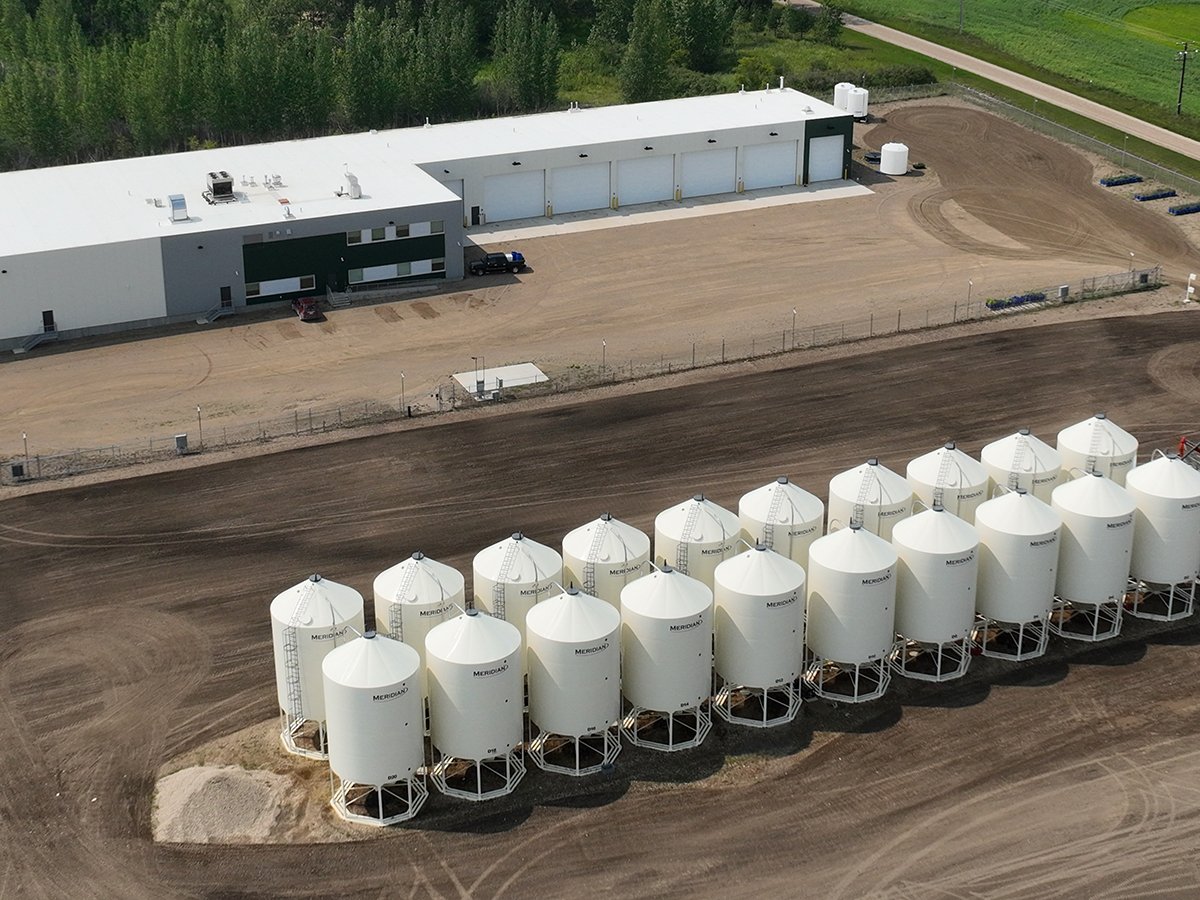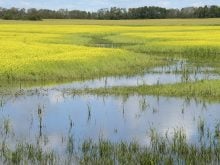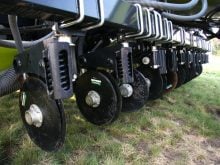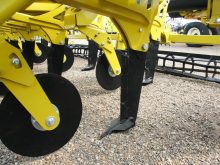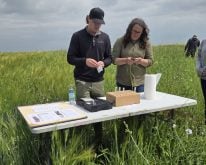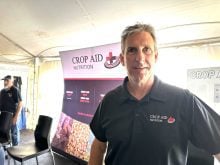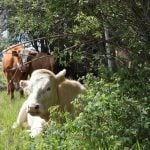WINNIPEG — One of the key concepts in variable rate technology is putting more fertilizer and crop inputs onto high performing parts of a field to maximize yield in those areas and then applying fewer inputs to troublesome and low-yielding land.
In his business, Leon Pratchler is taking the opposite approach by helping farmers maximize yields in the weakest areas of their fields.
“The biggest opportunity for an increase in production is on your lower performing acres … (the) low pH, high pH, saline environments and compacted areas,” said Pratchler, chief executive officer of Humaterra, a company in Birch Hills, Sask., that manufactures and markets a compost pellet called H-start.
Read Also
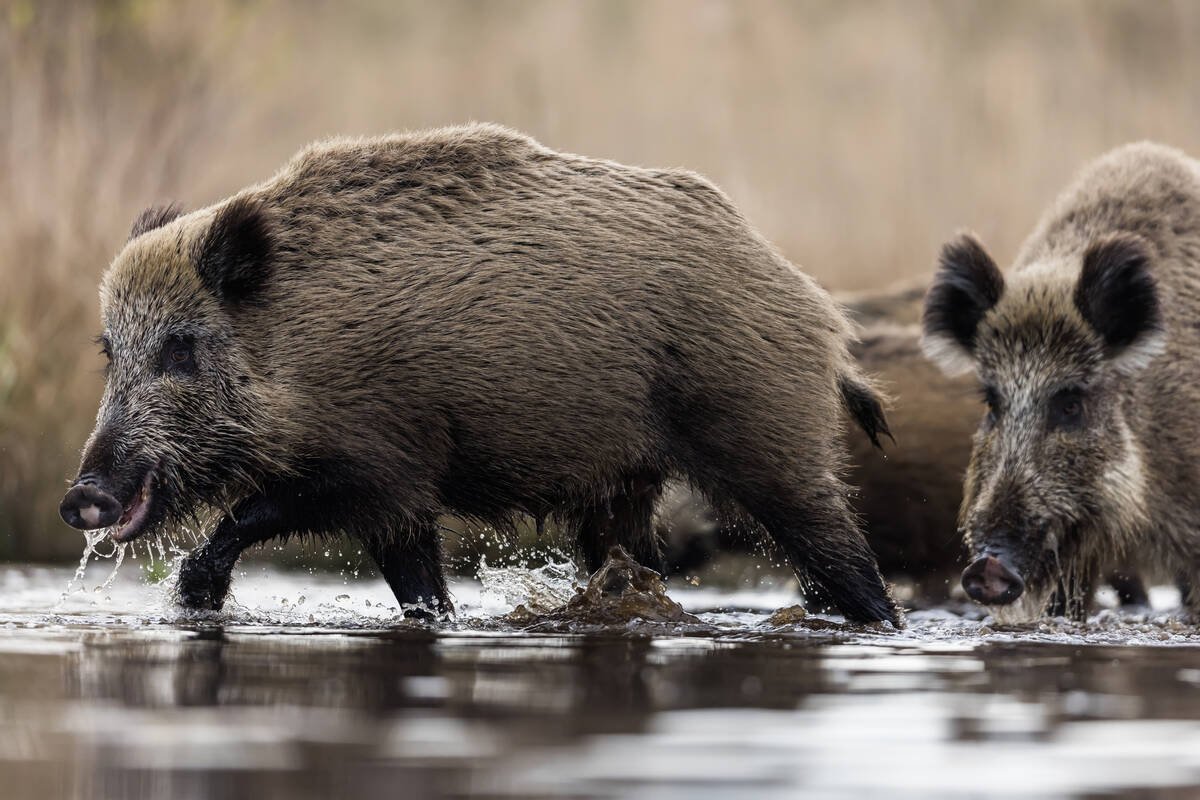
Manitoba bans wild boar possession
Manitoba has tightened the regulatory status of Eurasian wild boar in an effort to help fight back against invasive wild pigs.
“(It) is a targeted blend of a full spectrum of fungi and bacteria to improve your soil diversity and help you get more from the land,” says the Humaterra website.
Humaterra, which has sold H-start in Western Canada for about five years, has a larger market for its product than just troublesome acres of cropland.
It is selling H-start to greenhouse operators, horticultural growers, gardeners and those wishing to reclaim soil in the oil and gas industry, mining and municipal land.
The company’s back story began in France, where a livestock and dairy expert came up with the concept of H-start.
Koenraad Duhem was the scientific director of the French Livestock Institute before moving to Canada in 2015.
In France, he studied the rumen microbiome of cattle and was interested in altering the microbiology to improve livestock health and milk quality.
That prompted the idea of enhancing the biology of soil with compost, which “provides us a very diverse microbiome,” Pratchler said.
Compost, though, isn’t an easy product to transport or apply to fields. A pellet is more manageable.
“We’ve developed a (manufacturing) process that has evolved…. (It) is taking compost material, curing it, blending it and adding different ingredients to it, and forming it into a pellet,” said Pratchler, who joined Humaterra when Duhem was seeking a place to manufacture and distribute H-start on the Prairies.
Humaterra identified a plant in Birch Hills that was operated by Canopy Growth, the Ontario cannabis company.
Pratchler worked at the Canopy Growth facility and understood the operations, so Humaterra asked him to stay on and help run its business.
He said yes and is now CEO of a company that employs about 20 people, including sales staff.
The pellet can be blended with a dry fertilizer and applied at the same time, Or it can be kept in a separate tank and applied by itself, said Kent Gulash, vice-president of sales with Humaterra.
“Most of the H-Start that is applied right now is applied at seeding through (farmers’) seeding equipment,” he said.
“We sell the product by the tonne, with a tonne treating about 85 to 90 acres in an application at seeding,”
Breaking that down into acres, Humaterra recommends a rate of 25 to 35 pounds per acre, which equates to $16.50 to $23 per acre.
The pellet can also be broadcast on the soil surface in the spring or fall, Gulash added.
While it’s a compost pellet, Pratchler compared H-start to an inoculant because it delivers beneficial microbes to the soil.
To test its efficacy, Humaterra has done replicated trials at multiple locations on the Prairies, including Agri-ARM sites in Saskatchewan.
“We do have a substantial amount of research data,” Pratchler said.
“It gave us some preliminary data to use in the marketplace … (and) it gave us confidence that there’s something to it.”
That said, H-start won’t fix a patch of under-performing land in one growing season, but it will address underlying issues that hinder yield, Pratchler said.
“It’s not a magic bullet. There’s no such thing,” he said, adding it can help with soil health, water permeability, nutrient cycling and soil compaction.
“If you can (improve those issues) over a season or two, then yield comes.”
So far, Humaterra is having sales success with H-start in the cropland, horticulture and soil remediation markets.
“One of our most consistent areas of growth … has been in organic cropping. It’s a little ahead of conventional cropping,” Gulash said.
Looking ahead, Pratchler hopes to expand sales in Canada and may look toward the United States.
He will have competition.
Major players in the agricultural space such as Bayer and Corteva are investing hundreds of millions of dollars to develop and market bio-stimulants and bio-fertilizers for crop production.
“It’s fairly crowded, but we think we have something unique,” Pratchler said.


